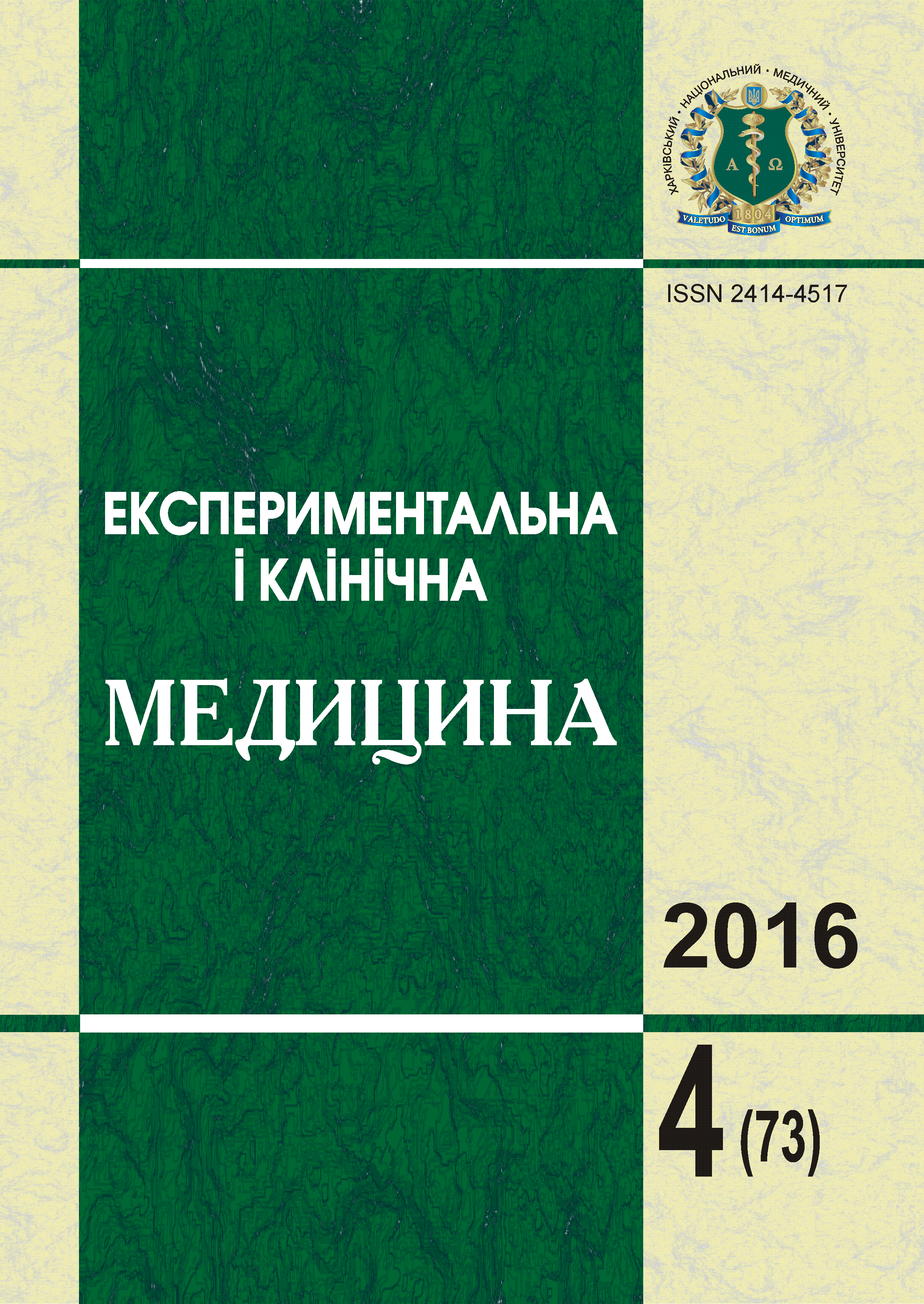Abstract
The study included 131 patients (70 men and 61 women) aged (69,5±11,6) years who underwent permanent pacing (ECS ) about atrioventricular block, permanent atrial fibrillation(AF) and sick sinus node syndrome with pacing modes DDD/DDDR, VVI /VVIR and CRT-D. We took into account the changes of hemodynamic parameters with regard to the degree of AH. The results showed that patients with implanted pacemaker and supportive medical therapy at the annual stage resulted to the normalization of systolic and diastolic blood pressure without significant differences in changes in hemodynamic parameters between 1, 2 and 3 degree of AH. Incomplete normalization of hemodynamic parameters in patients with hypertension and pacemaker indicates the need to strengthen the medical support.References
Dynamics of BP in patients with arterial hypertension after the cardiac pacing / T.E. Naples, M. Davidovich, S. A. Skopeckaâ, Y. Bondar// Annex I to the magazine Cardiovascular therapy and prophylaxis. – 2011. – № 10 (6). – Р. 218.
Improved quality of life after treatment of prolonged asystole during breath holding spells with a cardiac pacemaker / B. Kolterer, R. Gebauer, J. Janousek et al. // Medicine (Baltimore). – 2016. – № 95. – Р. 95–320.
Pu L. Cardiac resynchronization therapy (CRT) with right ventricular sense triggered left ventricular pacing benefits for the hemodynamics compared with standard CRT for chronic congestive heart failure: A cross-over study / L. Pu, Y. Wang, L. Zhao et.al. // Cardiol J. – 2015. – № 22 (1). – Р. 6–80.
Miller M. Leadless Cardiac Pacemakers: Back to the Future. / M. Miller, P. Neuzil, S. Dukkipati, V. Reddy. // J. Am. Coll. Cardiol. – 2015. – № 66 (10). – Р. 1179–1189.
Функціональний клас хронічної серцевої недостатності та динаміка гемодинамічних показників у пацієнтів в піврічному періоді після імплантації кардіостимуляторів / І.М. Коломицева, Д.Є. Волков, Д.О. Лопин, Н.И. Яблучанский // Український науково-медичний молодіжний журнал. – 2015. – № 1 (86) – С. 43–46.
Рекомендації Української Асоціації кардіологів з профілактики та лікування артеріальної гіпертензії. Посібник до Національної програми профілактики і лікування артеріальної гіпертензії; 4-те вид. – К.: ПП ВМБ, 2008. – С. 80.
Biventricular pacing for atrioventricular block and systolic dysfunction / A. Curtis, S. Worley, P. Adamson et al. // N. Engl. J. Med. – 2013. – № 368 (17). – Р. 1585–1593.
Fang D. Four years follow-up of epicardial left ventricular pacing by mini-thoracotomy for cardiac resynchronisation therapy in congestive heart failure (four cases) / D. Fang , W. Huang , H. Li // Cardiol Pol. – 2015. – 73 (3). – Р. 188–193.
М.С. Мальцева Прогностическое значение продолжительности интервала QTc в медикаментозном менеджменте пациентов после имплантации электрокардиостимуляторов и кардиоресинхронизирующих устройств / Автореф. дис. на здобуття наукового ступеня кандидата медичних наук за спеціальністю 14.01.11 «Кардіологія». – Харків, 2015.
Shanina I.V. Frequency of detached cardiac drugs prescribing in patients of different classes QRS complex duration on the permanent pacing background / I. V. Shanina, D. E. Volkov. // Visnik Kharkiv’s National University named V.N. Karazin Medicine. – 2014. – № 27. – Р. 33–37.
